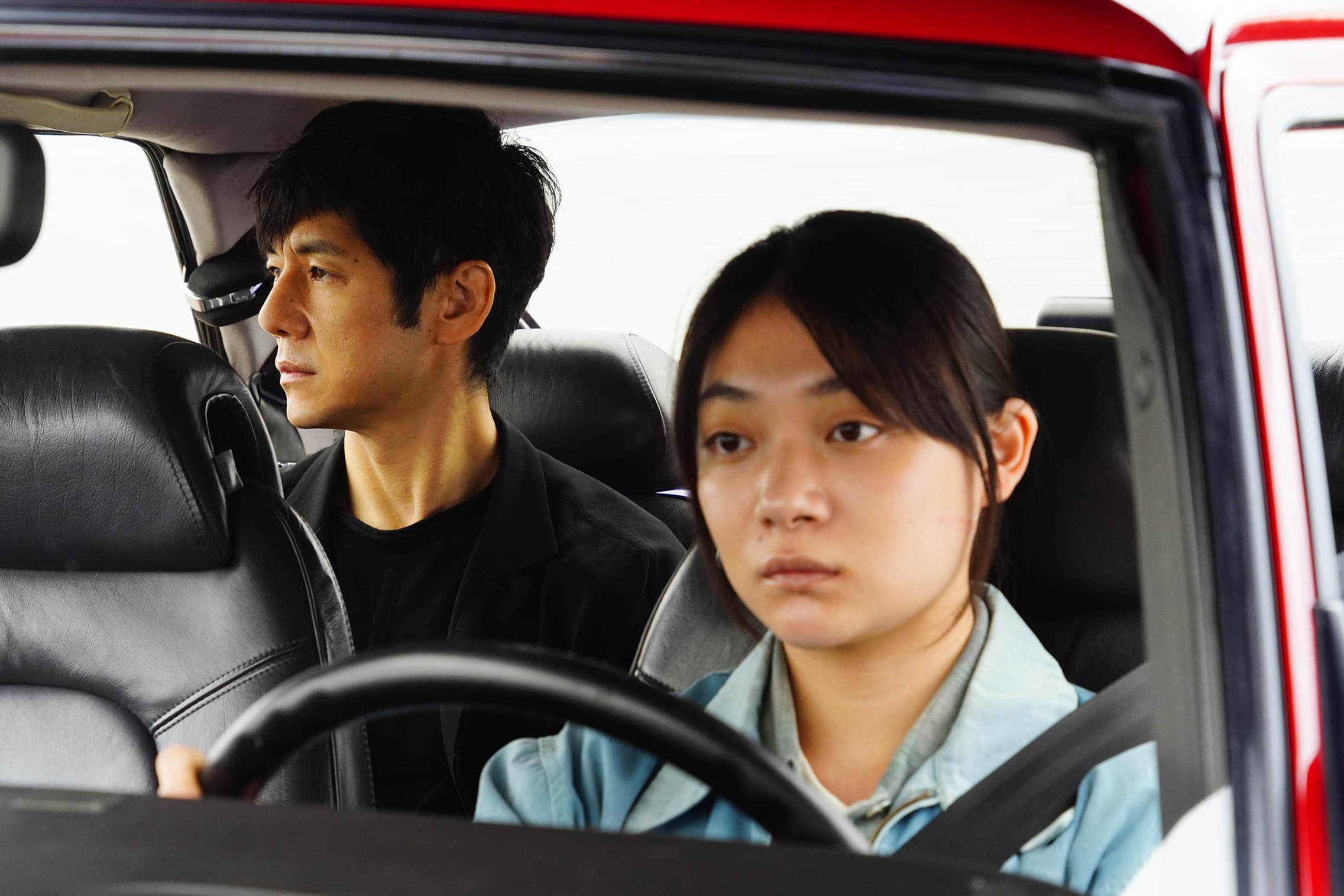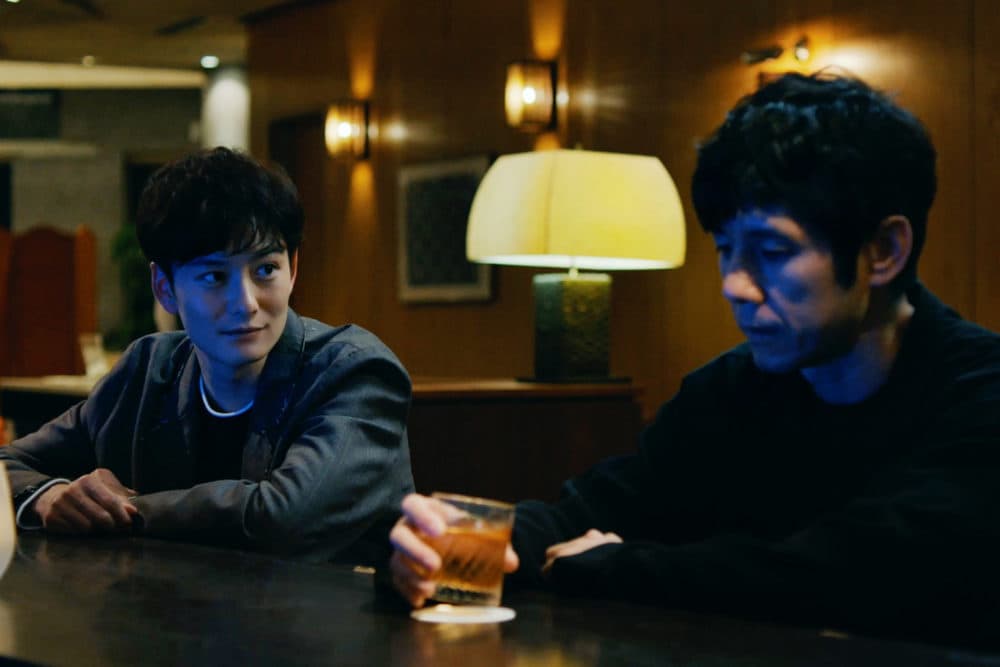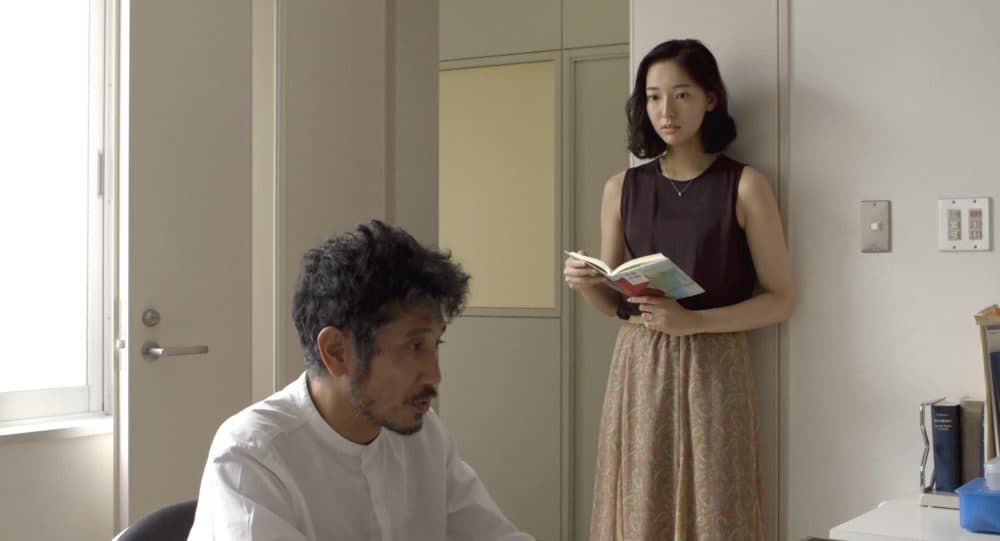Advertisement
Review
Director Ryûsuke Hamaguchi's 'Drive My Car' takes a road trip through grief

2021 was the year Ryûsuke Hamaguchi arrived as an international cinema superstar. A beloved cult figure among hardcore cinephiles since his massive 2015 masterpiece “Happy Hour” — an intimate epic about four women’s friendships that might be the most modest five-hour movie ever made — this staggeringly prolific 44-year-old writer-director became the darling of last fall’s New York Film Festival following the U.S. premieres of not one, but two extraordinary new pictures illuminating the scope of his talent for telling stories great and small. Hamaguchi’s 179-minute “Drive My Car” is an interior road trip about a grief-stricken stage director and his silent chauffeur that luxuriates in its expansive running time to amass an avalanche of accumulated emotions. Conversely, his “Wheel of Fortune and Fantasy” is a quick triptych of often very funny 40-minute vignettes revolving around mistaken identities and role-playing. Both films are belatedly making their way to the Boston area this month and should be considered appointment viewing.
Adapted from a short story in Haruki Murakami’s 2014 collection “Men Without Women” (while also incorporating elements from the stories “Kino” and "Scheherazade" in that same volume) the literate and sophisticated “Drive My Car” has dominated year-end awards from every serious critical organization, much to the hilarious fury of Hollywood types who hate subtitles and still haven’t gotten over “Parasite” winning Best Picture. The film stars Hidetoshi Nishijima as Yûsuke, a sad-eyed, middle-aged widower directing an experimental multilingual production of Anton Chekhov’s “Uncle Vanya” at a Hiroshima theater festival. For insurance purposes, during the production, he’s assigned a driver — the introverted 23-year-old Misaki (Tôko Miura) — to take him around town in his meticulously maintained, cherry red Saab 900. It’s a big ask for a buttoned-up control freak like Yûsuke to get in the backseat of his own automobile, yet over the course of these three hours, the car becomes something like a confession booth for our two taciturn strangers.
Yûsuke knew his wife had been cheating on him for years. He even walked in on her once, seeing her screwing the young star of a TV show on their living room couch. The marriage hadn’t been right since their four-year-old daughter died of pneumonia two decades ago, but Yûsuke loved his wife so dearly he couldn’t bear to disrupt their stagnant status quo – slipping out of the house unnoticed and never mentioning the incident again. One morning soon after, she said there was something she wanted to talk about when he got home from work. He dawdled and drove around until late that night, doing anything to delay whatever conversation was to come. By the time Yûsuke got back to the house, she was dead on the floor of a sudden cerebral hemorrhage, taking all of her secrets with her. The TV star turned up at her funeral, but didn’t dare say a word.

“Drive My Car” picks up two years later, when the now-disgraced TV star (Masaki Okada) is auditioning to play Astrov in Yûsuke’s production. The older man’s blood boils at the sight of his romantic rival. Perversely, he casts the kid as embittered old Uncle Vanya — a role for which he’s far too young and inexperienced. Is this his way of tormenting the young actor as revenge? Nishijima plays Yûsuke so captivatingly close to the vest we can never quite be sure what he’s thinking. Neither can his company, who are dismayed by their director’s insistence during rehearsals that they remain seated and flatly recite Chekhov’s text, over and over, ad infinitum. His production is in Japanese, Korean and sign language, with translations projected onto a screen behind the actors in a flourish that foregrounds the lines while also making a familiar play feel foreign and new.
I’d wager about 40% of “Drive My Car” is dialogue from “Uncle Vanya,” since during his commute Yûsuke likes to listen to an old cassette tape from when he once played the title character and his wife recorded all the other actors’ lines to help him rehearse. It’s like riding in the car with a ghost narrating, and here Hamaguchi does something I can’t recall seeing in a movie before. His screenplay (co-written with Takamasa Oe) becomes intertwined in our minds with the Chekhov play, as we start to see Yûsuke and Misaki as extensions of Vanya and his long-suffering niece Sonya. Lines from the play and the movie thematically overlap and begin to blur into one another, putting the picture in conversation not just with the Murakami stories from which it’s derived, but also “Uncle Vanya” itself.
A stunning bit of staging finds Sonya’s heartbreaking final monologue — one of the most daunting to deliver in all of theater — signed by a mute actress standing behind Yûsuke, with her arms draped over his shoulders so that Chekhov’s words are conjured and dissolve inches in front of his face. This is the kind of movie you want to hold in your heart for a little while after it’s over, turning over its multiple meanings and sad secrets.
Advertisement

Far more puckish and playful, though no less impressive, is Hamaguchi’s “Wheel of Fortune and Fantasy,” a trio of contemporary comedic tales in the spirit of Eric Rohmer during which characters can’t help talking their way into romantic entanglements and other forms of trouble. It’s a series of sidewinding conversations that double back and then around again, with people claiming to be who they aren’t in order to convince themselves of things they probably shouldn’t. My favorite of these stories is the second, during which a bored, adulterous housewife (played by a brilliant Katsuki Mori) tries out an ill-conceived blackmail scheme on the stern professor who dared to give her secret young boy-toy bad grades. Her attempted seduction involves reading aloud an erotic passage from the instructor’s recently published novel, and it backfires in thrillingly suspenseful, unexpected ways.
Were it a standalone feature, this second chapter of “Wheel of Fortune and Fantasy” might be my favorite movie I saw last year. (The other two stories are fine, but the one in the middle is for the ages.) Hamaguchi has often cited the films of John Cassavetes as what inspired him to become a director, though at first glance his repressed, refined characters couldn’t seem further from the boisterous brio of Cassavetes’ bare-knuckle blowhards. Yet it makes sense when you consider both men’s preoccupation with performance, and that the tamped-down etiquette of Hamaguchi’s characters is the Japanese equivalent to the American filmmaker’s backslapping bravado. They’re both false fronts that their movies take the time and care to peel away, revealing the roles we all play and the roiling emotions underneath everyday life.
“Drive My Car” opens at the Coolidge Corner Theatre on Friday, Jan. 14 and screens at the Somerville Theatre from Monday, Jan. 24 through Thursday, Jan. 27. “Wheel of Fortune and Fantasy” screens at the Somerville Theatre from Monday, Jan. 31 through Thursday, Feb. 3.
